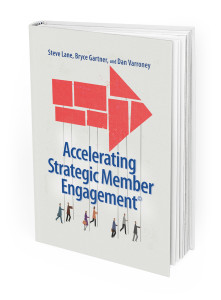 Can 2 Pain Point Strategies Drive One Society’s Revenue Growth? Pain point strategies continue to help Associations and Societies deploy services that help companies survive and thrive. Just ask Lawrence D. Sloan, President & CEO, Society of Chemical Manufacturers & Affiliates (SOCMA)( http://www.socma.com/).
Can 2 Pain Point Strategies Drive One Society’s Revenue Growth? Pain point strategies continue to help Associations and Societies deploy services that help companies survive and thrive. Just ask Lawrence D. Sloan, President & CEO, Society of Chemical Manufacturers & Affiliates (SOCMA)( http://www.socma.com/).
From his arrival at the 200+ member specialty chemical manufacturing organization through today, Sloan continually meets with members in their plant facilities. Using a “shoe leather” approach, these meetings have brought about program changes helping realign SOCMA closer to the business needs of its membership. Based on member feedback and gridlock on Capitol Hill, SOCMA has realigned the organization’s advocacy strategy to a heavier emphasis on improving regulations and the regulatory process.
2 Pain Point Strategies
In today’s competitive environment, membership organizations are aggressively positioning themselves against competitors. Since some companies only choose one membership, effective market differentiation and member ROI could determine either a renewal or a resignation:
1. Member Centric. With Washington, DC, gridlock inhibiting progress in legislative advocacy, SOCMA uses multiple avenues to advocate issues and concerns impacting the industry, including leveraging its members to make their case to key regulators. Achieving needed regulatory reforms for the specialty chemical sector can help reduce compliance costs.
2. Make a Difference. SOCMA’s no-cost member service is an environmental, health, safety and security (EHS&S) management system. With the majority of its members being small and medium-size enterprises (SMEs), they needed an EHS&S program that went beyond the one-size-fits-all approach of programs like Responsible Care. Consequently, they established their ChemStewards® program in 2005 to meet the unique needs of the batch, custom and specialty chemical industry and its membership.
Can 2 Pain Point Strategies Drive One Society’s Revenue Growth?
 Since 2009, a pain point focus helped SOCMA drive 18% retention improvement and double-digit non-dues revenue growth. Not yet satisfied, Sloan plans more improvements in SOCMA’s value proposition and an accelerated new member growth campaign.
Since 2009, a pain point focus helped SOCMA drive 18% retention improvement and double-digit non-dues revenue growth. Not yet satisfied, Sloan plans more improvements in SOCMA’s value proposition and an accelerated new member growth campaign.
For a free copy of the “Accelerating Strategic Member Engagement” eBook, request your copy at www.potomaccore.com.





